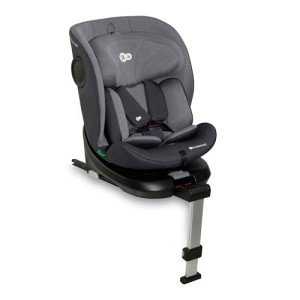Transitioning from Pram to Stroller: A Comprehensive Guide for Parents
Navigating the world of baby equipment can be frustrating for brand-new parents, particularly when it concerns choosing in between prams and strollers. Both serve essential functions, however they are created for various requirements and stages of a child's advancement. This short article intends to notify parents about the shift from prams to strollers, detailing the advantages and considerations while supplying practical ideas.
Comprehending Prams and Strollers
Before diving into their differences, it's important to understand what constitutes a pram and a stroller.
Prams:
A pram, short for perambulator, is usually designed for infants approximately around 6 months old. It includes a flat, cushioned sleeping location and is primarily planned for carrying very children. Prams are designed for convenience and safety, as newborns need to lie flat to support their spinal column and organs.
Strollers:
Strollers, or pushchairs, are designed for slightly older children who can sit up unaided. They come in different designs and setups, from lightweight umbrella strollers to heavier-duty models suitable for rough surfaces. Strollers are more flexible and easier to steer in congested spaces, making them a popular choice for active households.
Advantages of Transitioning from Pram to Stroller
- Increased Mobility and Convenience
Strollers are usually lighter and more compact than prams, making them much easier to navigate through shops, public transportation, and crowded locations. A lot of strollers can fold easily, permitting practical storage. - Versatility for Different Activities
Modern strollers typically come with numerous configurations and can accommodate different activities, consisting of running, outdoor adventures, and shopping journeys. They can also adapt to fit kids of various ages and weights. - Boosted Child Comfort and Safety
Lots of strollers now come geared up with innovative security features, such as five-point harnesses and reclining seats, guaranteeing that older babies and young children remain comfortable and safe during trips. - Cost-Effective Solution
Rather than acquiring both a pram and a stroller, families can buy a premium stroller that fulfills the needs of their growing child, possibly saving cash in the long run.
When to Make the Transition
The shift from a pram to a stroller typically occurs when the child reaches around six to seven months of age or when they can stay up unassisted. Nevertheless, a number of elements can influence this shift, consisting of:
- Child's Development: If the child reveals indications of wanting to explore their surroundings, it might be time to change to a stroller.
- Family Lifestyle: Active families may need a stroller earlier to accommodate outings and travel.
- Comfort: Observe the child's convenience level. If they appear confined in a pram or are ending up being more active, it's time to consider a stroller.
Selecting the Right Stroller
Choosing the best stroller requires careful consideration of numerous factors:
| Factor | Description |
|---|---|
| Safety Features | Look for tough construction, reliable brakes, and harness systems. |
| Weight and Foldability | Pick a light-weight stroller that is easy to fold and transport. |
| Age Appropriateness | Guarantee the stroller is suited for your kid's age, weight, and height. |
| Maneuverability | Evaluate how quickly the stroller relocations and turns, especially in crowded spaces. |
| Storage Space | Consider the storage capability underneath the stroller and the size when folded. |
| Adjustability | Look for strollers with adjustable functions, such as seat recline and deal with height. |
Frequently asked questions about Transitioning from Pram to Stroller
Q: Is it required to change to a stroller?A: While it's not necessary, changing to a stroller typically offers more adaptability and ease for both parent and kid as they grow. Q: What includes ought to I prioritize
in a stroller?A: Prioritize safety functions, weight, foldability, and storage capability based upon your way of life and activities with your kid. Q: Can I use a stroller for newborns?A: Some strollers can accommodate baby safety seat or
have flat reclining seats, making them ideal for
newborns. Constantly inspect the producer's guidelines. Prams Pushchairs UK : How can I guarantee my child is comfortable in a stroller?A: Look for strollers with cushioned seats, several recline positions, and adjustable leg rests to accommodate your child's convenience. Pram Chair : What are the very best kinds of strollers available?A: Popular types consist of umbrella strollers, running strollers, travel system strollers, and convertible strollers, each accommodating differentrequirements. Tips for a Smooth Transition Test Out Different Models: Before committing to a purchase, physically test different strollers to see which one suits both you and your kid best. Include Your Child:
If they are old enough, permit your
child to experiment with various strollers to see which they discover most comfy. Read Reviews: Consider looking at online evaluations and suggestions from other moms and dads to much better inform your choice
. Plan for Storage and Transport: Factor in how the stroller will suit your cars and truck or home storage area to prevent future inconveniences.
- Evaluate Your Activities: Think about where and how you plan to utilize the stroller-- city locations may require a various type compared to rural or off-road settings.
- Transitioning from a pram to a stroller is an essential turning point in a kid's life and a substantial choice for parents. By comprehending the differences and
advantages of each, moms and dads can make informed choices that will support their household's lifestyle and their child's development. Equipped with the ideal details, moms and dads can with confidence browse this shift and
make sure that their child is safe, comfy, and prepared for all the experiences ahead.

